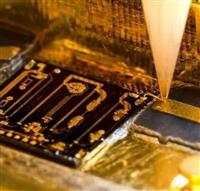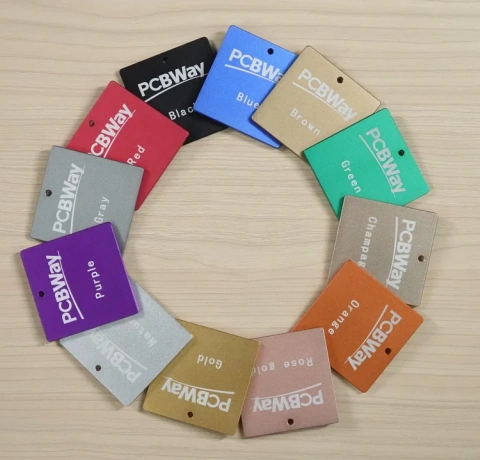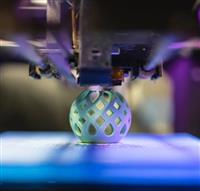
Class Transition Temperature
TG-value, temperature at which resin ceases to act as a solid, Till this temperature, no separation will take place between resin/copper/reinforcement.
Cycle Rate
A component placement term measuring machine speed from pick-up to board location and return.
Cut
open circuit. An unwanted break in the continuity of an electrical circuit, that prevents current from flowing.
Current-carrying Capacity
The maximum current which can be carried continuously, under specified conditions, by a conductor without causing degradation of electrical or mechanical properties of the printed circuit board.
Cure
Change of physical properties of a material via chemical reaction or heat and catalysts, usually from a liquid to a solid.
C-stage Material Laminate:
The condition of a resin polymer when it is in the solid-state, with high molecular weight, being insoluble and infusible.
Cross-talk:
The undesirable interference caused by the coupling of energy between single paths.
Cross-linking
The formation of chemical ties between reactive atoms in the molecular chain of a plastic.
Cross-hatching
The breaking of large conductive areas by use of a pattern of voids in the conductive material.
Crimp Contact
A type of connector contact whose end is a hollow cylinder that can be crimped onto a wire inserted within it.
Crazing
A condition existing in the base material in the form of connected white spots or “crosses” on or below the surface of the base material, reflecting the separation of fibres in the glass cloth and connecting weave intersections.
Cracking
A condition that makes breaks or separations in coatings that extends through to an underlying surface.
Cover Lay, Cover Layer, Cover Coat
An outer layer(s) of insulating material applied over the conductive pattern on the surface of the printed board.
Coupon
One of the patterns of the quality conformance test circuitry area. (See: also Test Coupon).
Cosmetic Defects
A smear or stain on the board representing flux residue after soldering and a variation from conventional appearance.
Corrosive Fluxes
Materials of inorganic acids and salts for surfaces of difficult solderability. Also called acid fluxes.
Corner Mark
Marks placed inside the edges of PCB corners to align and register the layers.
Copper-mirror Test
A corrosivity test for fluxes in which the compound’s reaction to a copper film vacuum-deposited on a glass plate is noted.
Copper Foil-See Foil
Quality electrolytic copper used to form conductive patterns on printed circuits. It is available in a number of weights (thickness) the traditional weights are 0.5, 1 and 2 ounces per square foot. (18, 35 and 70μm thick).
Copper Clad
A material, usually supplied in large sheets, consisting of a base material to one or both sides of which a thin copper foil is boned. Synonym: laminate.
Continuity Testing
A procedure in which voltage is applied to two interconnected lands to ascertain the presence or absence of current flow.
Contaminate/Contaminant
An impurity or foreign substance whose presence on printed wiring assemblies could electrolytically, chemically, or galvanically corrode the system.
Contact Spacing
The distance between the centre lines of adjacent contact areas.
Contact Resistance
The electrical resistance of the metallic surfaces at their interface in the contact area under specified conditions.
Contact Area
The common area between a conductor and a connector through which the flow of electricity takes place.
Connector Tongue
A protrusion of the Printed Circuit Board edge that is manufactured to a configuration to mate with a receptacle that provides electrical and/or mechanical junction between the Printed Circuit Board and other Circuitry.
Connection
One plug or receptacle which can be easily joined to or separated from its mate. Multiple-contact connectors join two or more conductors with others in one mechanical assembly.
Conformal Coating
A thin dielectric cover brushed, dipped or sprayed over parts and circuits of PCBs for environmental and mechanical protection.
Conductor
A single conductive path in conductive pattern. A PCB has at least one layer of conductors. Synonyms: path, trace.
Conductor Width
The observable width of the pertinent conductor at any point chosen at random on the printed board, normally viewed from vertically above unless otherwise specified.
Conductor-to-hole Spacing
The distance between the edge of a conductor and the edge of a supported or unsupported hole.
Conductor Thickness
The thickness of the conductor at any point chosen at random on the printed board, normally viewed from vertically above unless otherwise specified.
Conductor Spacing
The average or minimum (as specified) distance between the adjacent edges of conductors on the same layer of a printed board.
Conductor Side
The side of a single-sided printed board containing the conductive pattern.
Conductor Pattern
See “Conductive Pattern ”.
Conductor Layer
The total conductive pattern formed upon one side of a single layer of base material.
Conductor Base width
The conductor width at the plane of the surface of the base material. See also: Conductor width.
Conductive Pattern
The configuration or design of the conductive material on the base laminate. Includes conductors, lands, and through connections.
Conductive Foil
A thin sheet of metal that may cover one or both sides of the base material and is intended to form the conductive pattern.
Conductive Adhesive
A material to which metal particles (usually silver ) are added to increase electrical conductivity.
Component
Any of the basic parts used in building electronic equipment, such as a resistor, capacitor, DIP or connector, etc.
Component side
(Primary side) The surface layer of a board on which most of the components are placed. Component side is also referred to as the top side (layer one-counting downwards) of the board.
Component Hole
A hole in a PCB through-which a component lead passes in order to be soldered or connected mechanically to the printed circuit and electrically to the conductive pattern. Synonym: mounting hole. The hole is used for the attachment and electrical connection of component terminations, including pins and wires, to the printed board.
Component Density
The quantity of components on a unit area of printed board.
Compiler
A software module that analyses and converts programs from a high-level language to binary machine codes.
Compatibility
In which materials can be mixed or brought into contact with no reaction or separation.
Cold Solder Connection
A solder connection that exhibits poor wetting and that is characterized by a greyish porous appearance.
Coefficient of Expansion, Thermal-CTE
The fractional change in dimension of a material for a unit change in temperature expressed in ppm/C.
COB
Chip on board. Component packaging technology in which bare integrated circuits are attached directly to the surface of a substrate and interconnected to the substrate most often by means of microscopic wires.
Coating
A thin layer of material, either conductive or insulating, applied over components or base materials.
Clinched-wire through Connection
A connection made by a wire which is passed through a hole in a printed circuit board, and subsequently formed, or clinched, in contact with the conductive pattern on each side of the board, and soldered.
Clearance
Metal to metal gaps on a board.
Clearance Hole
A hole in the conductive pattern larger than, but concentric with, a hole in the printed board base material.
Clamshell Fixture
An in-circuit test fixture to probe both sides of a PCB.
Clad
(Adj). A condition of the base material to which a relatively thin layer or sheet of metal foil has been bonded at one or both of its sides, e.g. a metal clad base material.
Clad or Cladding
A relatively thin layer or sheet of metal foil which is bonded to a laminate core to form the base material for printed circuits.
Circumferential Separation
A crack in the plating extending around the entire circumference of a plated through-hole.
Circuit Tester
Generic term for volume tester of PCBs, such as bed-of-nails, footprint, guided probe, internal trace, loaded board, bare board and parts testing.
Chip Testers
Large computer-based systems that test individual ICs, especially LSI and VLSI.
Chemically-deposited Printed Chip on board
In this technology integrated circuits are glued and wire-bonded directly to printed circuit boards instead of first being packaged.
Chemical Hole Clearing
The chemical process for cleaning conductive surfaces exposed within a hole ( see also “ Etch-back ”).
Chemical Conversion Coating
A protective coating produced by the chemical reaction of a metal with a chemical solution.
Check Plots
Pen plots that are suitable for checking only. Pads are represented as circles and thick traces as rectangular outlines instead of filled-in artwork. This technique is used to enhance the transparency of multiple layers.
Characteristic Impedance
The ratio of voltage to current in a propagating wave, i.e., the impedance which is offered to this wave at any point of the line. The characteristic impedance is expressed in ohms.
Chamfer
A corner which has been rounded or shaped to eliminate an otherwise sharp edge.
Catalyst
A chemical that speeds or changes the cure of a resin but does not become a part of the final product. Examples: hardeners, promoters, inhibitors.
Cast Adhesive
Special sheet adhesive material used for bonding polyimide multi-layer boards and flexi-rigids ( similar to prepreg = B-Stages ).
CARD
See “ Printed Board ”
Capillary Action
A phenomenon of force adhesion and cohesion that prompts liquids ( molten solder) to flow against gravity between closely spaced solid surface, such as component leads and pads.
Capacitive Coupling
The electrical interaction between two conductors caused by the capacitance between them.
CAD/CAM system
Computer-aided design is the use of special software tools to formulate printed circuit patterns. Computer-aided manufacturing translates such designs into actual products.
CAD system
Computer-aided design that permits the interactive use of computers, programs and procedures in the design process. Decisions are made by the operator while the computer provides the data manipulation functions.





